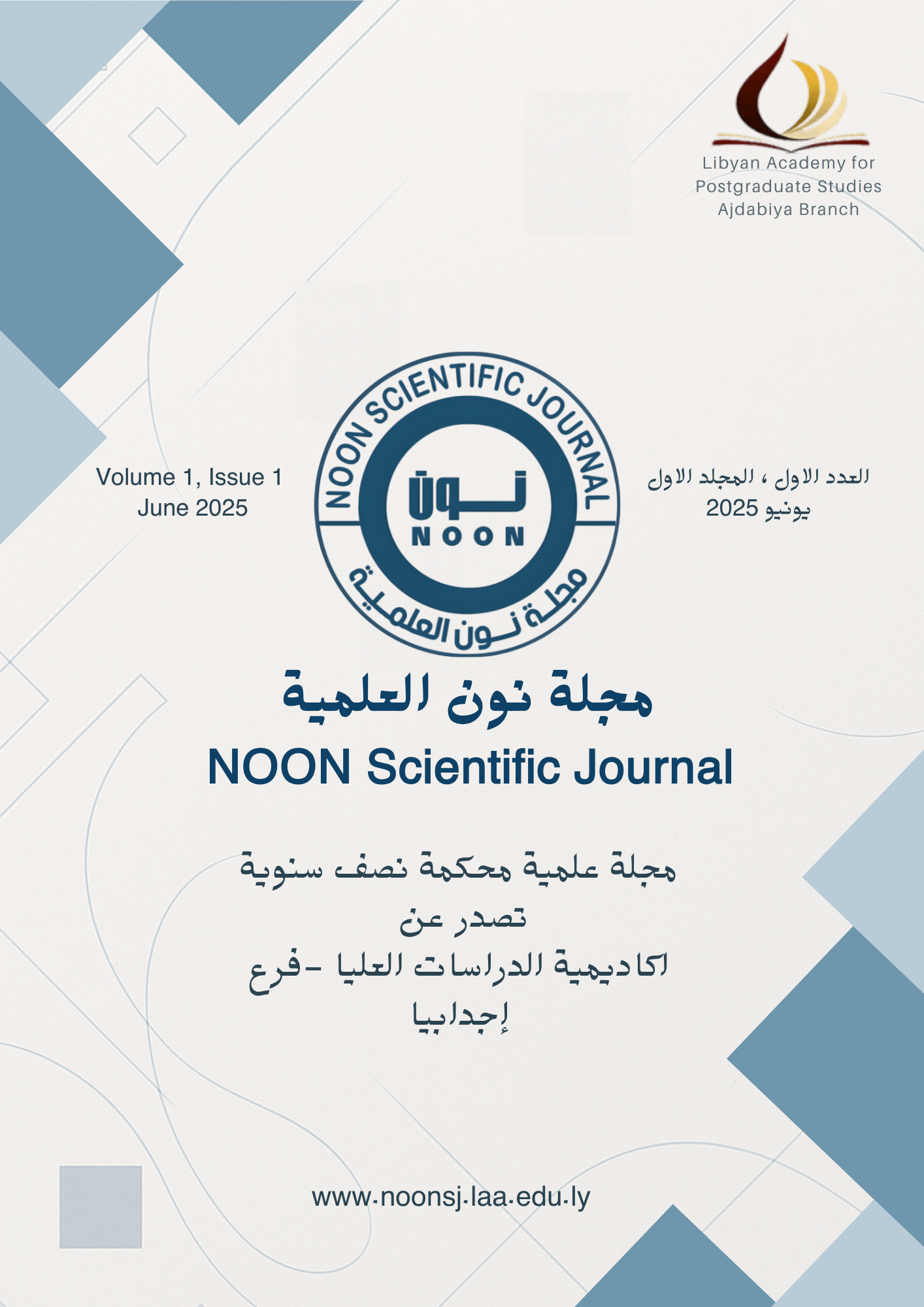Home \ Archives\vol 1, No 1, 2025\ Articles
GEOCHEMICAL AND INDUSTRIAL CHARACTERISTICS OF PHOSPHATE-BEARING ROCKS IN SEVEN LIBYAN AREAS
- OSAMA RAHIL SHALTAMI, ABOBAKAR E. ALGOMATI, FIRAS KHAMIS MUHAMMED AND KAMAL ABRAHEEM ALMAHDI
- Benghazi University, University of Bright Star,Omar Al-Mukhtar University, Libya
DOI: 10.64587/NSJAPGS
Volume (1), Issue (1) , June 2025

Published: 06/30/2025
Keywords: Phosphorites, Fertilizer Industry, Artificial Bone, Libya.
Abstract: Libya has an abundance of mineral resources, (such as phosphate deposits), but its economy is largely reliant on gas and oil. In this work, the phosphate-bearing rocks in the Al Fuqaha, Sabha, Idri, Hasi Anjiwal, Tikiumit, Wadi Tanezzuft, and Anay sheets are evaluated for their geochemical and industrial characteristics. The phosphate-bearing rocks are detected in a variety of formations, including the Melaz Suqran Formation (Late Ordovician), the Akakus Formation (Late Silurian), the Awainat Wanin Formation (Middle-Late Devonian), the Marar Formation (Early Carboniferous), the Assedjefar Formation (Early Carboniferous), the Zarzaitine Formation (Late Permian-Early Triassic), and the Zimam Formation (Late Cretaceous-Late Paleocene). According to the findings, there are three different types of phosphate-bearing rocks: (1) Phosphorite rocks; (2) Phosphatic rocks; and (3) Phosphatized rocks. Most of the phosphorite samples are mainly derived from marine origin, while the remaining samples are mainly resulted from detrital input. The phosphatic rocks are of low quality, whereas the phosphorites range in quality from medium to high. Although the Marar Formation in Tikiumit Sheet satisfies all fertilizer industry standards, the Fe2O3 content requires treatment. Artificial bone can be made from the Awainat Wanin Formation in Sabha Sheet, but only after the Ca/P ratio has been processed to the proper level.
References
Abou El-Anwar, E.A., Mekky, H.S., Abd El Rahim, S.H., & Aita, S.K. (2017). Mineralogical,
geochemical characteristics and origin of Late Cretaceous phosphorite in Duwi Formation (Geble
Duwi Mine), Red Sea region, Egypt. Egyptian Journal of Petroleum, 26(1): 157-169
(https://doi.org/10.1016/j.ejpe.2016.01.004).
Ahmed, A.H., Aseri, A.A., & Ali, K.A. (2022). Geological and geochemical evaluation of phosphorite
deposits in northwestern Saudi Arabia as a possible source of trace and rare-earth elements. Ore
Geology Reviews, 144: 104854 (https://doi.org/10.1016/j.oregeorev.2022.104854).
Aydin, I., Aydin, F., Saydut, A., Bakirdere, E.G., & Hamamci, C. (2010). Hazardous metal
geochemistry of sedimentary phosphate rock used for fertilizer (Mazıdag, SE Anatolia, Turkey).
Microchemical Journal, 96(2): 247-251 (https://doi.org/10.1016/j.microc.2010.03.006).
Galecic, M. (1984). Geological Map of Libya, 1:250000, Sheet: Anay, NG 32-16, Explanatory
Booklet. Industrial Research Centre (IRC), Tripoli, Libya; 98p.
Heidarpour, T. (2009). Processing of Dalir phosphate samples using leaching method. Unpublished
MSc Thesis, Department of Mining and Metallurgical Engineering, Amirkabir University of Technology, Iran.
Kay, J.F. (1988). Bioactive surface coatings: Cause for encouragement and caution. Journal of Oral
Implantology, 14(1): 43-54 (https://pubmed.ncbi.nlm.nih.gov/3268695/).
Khan, K.F., Dar, S.A., & Khan, S.A. (2012). Geochemistry of phosphate bearing sedimentary rocks in
parts of Sonrai block, Lalitpur District, Uttar Pradesh, India. Chemie der Erde; 72: 117-125
(https://doi.org/10.1016/j.chemer.2012.01.003).
Khasawneh, F.E., Sample, E.C., & Kamprath, E.J. (1980). The role of phosphorus in agriculture. Madison, Wisc; 910p (https://acsess.onlinelibrary.wiley.com/doi/book/10.2134/1980.roleofphosphorus).
Kumta, P.N., Sfeir, C., Lee, D.H., Olton, D., & Choi, D. (2005). Nanostructured calcium phosphates
for biomedical applications: Novel synthesis and characterization. Acta Biomaterialia, 1(1): 65-83
(https://doi.org/10.1016/j.actbio.2004.09.008).
Liu, H., Yazici, H., Ergun, C., Webster, T.J., & Bermek, H. (2008). An in vitro evaluation of the Ca/P
ratio for the cytocompatibility of nano-to-micron particulate calcium phosphates for bone regeneration. Acta Biomaterialia, 4: 1472-1479 (https://doi.org/10.1016/j.actb o.2008.02.025).
Lorenz. W., & Gwosdz, W. (2003). Manual on the geological-technical assessment of mineral
construction materials. Schweizerbart’sche Verlagsbuchhandlung; 498p(https://www.schweizerbart.de/publications/detail/isbn/9783510959174/Manual_on_the_Geological_t
echnical_Assessment_of_Mineral_Construction_Materials).
Ozer, A.K., Gulaboglu, M., & Bayrakceken, S. (2000). Physical structure and chemical and mineralogical composition of the Mazidagı (Turkey) phosphate rock. Industrial and Engineering
Chemistry Research; 39(3): 679-683 (https://pubs.acs.org/doi/10.1021/ie990441v).
Parizek, A., Klen, L., & Rohlich, P. (1984). Geological Map of Libya, 1:250000, Sheet: Idri, NG 33
1, Explanatory Booklet, Industrial Research Center (IRC) Tripoli, Libya; 108p.
Pettijohn, F.J. (1957). Sedimentary Rocks. 1st edition, Harper and Brothers; 718p
(https://www.amazon.com/Sedimentary-Rocks-F-Pettijohn-1957-06-01/dp/B01A0B7M5E).
